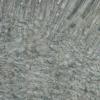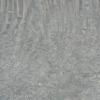
09-08-2025 13:13
 Maria Plekkenpol
Maria Plekkenpol
Hello,Yesterday I found these on burnt soil. Apoth

28-10-2025 19:33
 Nicolas Suberbielle
Nicolas Suberbielle
Bonjour à tous,Je voudrais votre avis sur cette r

25-11-2016 13:54
 Stephen Martin Mifsud
Stephen Martin Mifsud
Hi, I found numerous seeds of Washingtonia robusta

28-10-2025 22:22
 Bernard Declercq
Bernard Declercq
Hello.I'm searching for the following paper:Punith

28-10-2025 15:37
Carl FarmerI'd be grateful for any suggestions for this strik

28-10-2025 11:29
 Tanja Böhning
Tanja Böhning
Hello, I found this very small (ca 0,5mm) yellow

27-10-2025 00:34
 Francois Guay
Francois Guay
I found this strange species in Québec,Canada, gr
Mollisia on Fagus
Raúl Tena Lahoz,
28-03-2012 19:17
 Hi all!
Hi all!A friend has collected this Mollisia on Fagus wood (I have not checked micro anatomy). I attach some pics of it in a pdf file. I cannot find a good species with Andreas´ or Zotto´s keys (Helotiales 2005).
Spore range: (6,5)8-10,5(11,8) x 2-2,5. Oil 0.
Asci range: 60-77 x 5,5-6,8. Euamyloid.
Paraphyses and excipular cells do not stain yellow or violet in KOH (5% aprox.).
More features on the pdf.
Any idea?
Raúl
Hans-Otto Baral,
28-03-2012 20:42

Re : Mollisia on Fagus
Hi Raul
why not say Mollisia cinerea to this?
Zotto
why not say Mollisia cinerea to this?
Zotto
Raúl Tena Lahoz,
28-03-2012 22:46

Re : Mollisia on Fagus
Hi Zotto
I discarded cinerea due to spore width. You both say 2,5-3 and I saw more 2-2,5, but I see in "Mollisia cinerea cf., HB 1241" that you have (1,5)2-2,5(-3). That´s a good cinerea?
Raúl
I discarded cinerea due to spore width. You both say 2,5-3 and I saw more 2-2,5, but I see in "Mollisia cinerea cf., HB 1241" that you have (1,5)2-2,5(-3). That´s a good cinerea?
Raúl
Hans-Otto Baral,
28-03-2012 23:18

Re : Mollisia on Fagus
I must admit I haven't a good concept of cinerea. But if one admits a certain variability, I think this here could be named so.
Zotto
Zotto
Raúl Tena Lahoz,
29-03-2012 10:44

Re : Mollisia on Fagus
Ok Zotto, thanks a lot!
Andreas Gminder,
03-04-2012 16:39

Re : Mollisia on Fagus
Hello Raúl,
the micoscopical details say indeed M. cinerea. I wouldn't lay to much emphasis on the differences in spore width.
But there are other things which bother me a little, e.g. the macroscopical appearance. My imagination of a (typical) cinerea is a ash grey hymenium and a growth of many apothecia in direct contact, so that they difforme each other.
Also the rich subicular hyphae do not suite my concept of M. cinerea.
My idea would be, whether this could not be M. lividofusca. Though the subhymenium of the examined apothecium is hyaline. If have noticed several times, that sometimes within a collection you need to examine several apothecia, until you have one with an obviouse brownish subhymenium. So may be you can examine some more apothecia (best is a cut through the middle axe, and then observe in KOH 3% that will show the pigmented areas the best).
Spore measurements would also fit better to M. lividofusca, especially when the loger spores up to appr. 12 µm would be not so rare that you have to put that value in brackets.
best regards,
Andreas
the micoscopical details say indeed M. cinerea. I wouldn't lay to much emphasis on the differences in spore width.
But there are other things which bother me a little, e.g. the macroscopical appearance. My imagination of a (typical) cinerea is a ash grey hymenium and a growth of many apothecia in direct contact, so that they difforme each other.
Also the rich subicular hyphae do not suite my concept of M. cinerea.
My idea would be, whether this could not be M. lividofusca. Though the subhymenium of the examined apothecium is hyaline. If have noticed several times, that sometimes within a collection you need to examine several apothecia, until you have one with an obviouse brownish subhymenium. So may be you can examine some more apothecia (best is a cut through the middle axe, and then observe in KOH 3% that will show the pigmented areas the best).
Spore measurements would also fit better to M. lividofusca, especially when the loger spores up to appr. 12 µm would be not so rare that you have to put that value in brackets.
best regards,
Andreas
Raúl Tena Lahoz,
04-04-2012 10:15

Re : Mollisia on Fagus
Hi Andreas
Thanks for your opinion. I checked 6 apos and I did not notice brownish subhymenium. About the subicular hyphae, they were scanty and only present at the apothecial base. I attach more photos of the subhymenium.
I send to your mail a link with the hole micro pictures.
Raúl
Thanks for your opinion. I checked 6 apos and I did not notice brownish subhymenium. About the subicular hyphae, they were scanty and only present at the apothecial base. I attach more photos of the subhymenium.
I send to your mail a link with the hole micro pictures.
Raúl
Andreas Gminder,
04-04-2012 10:26

Re : Mollisia on Fagus
Hello Raùl,
thanks a lot.
So M. lividofusca seems to be no opinion and I would leave the collection as M. cinerea agg., due to missing better choices ;-))
best regards,
Andreas
thanks a lot.
So M. lividofusca seems to be no opinion and I would leave the collection as M. cinerea agg., due to missing better choices ;-))
best regards,
Andreas

 Mollisia-sp-on-Fagus-Moncayo-0001.pdf
Mollisia-sp-on-Fagus-Moncayo-0001.pdf

